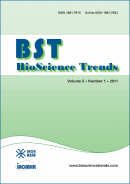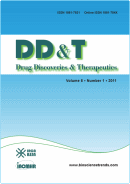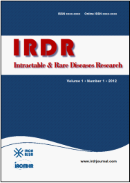Drug Discov Ther. 2025;19(3):208-209. (DOI: 10.5582/ddt.2025.01055)
The pTau217/Aβ1-42 plasma ratio: The first FDA-cleared blood biomarker test for diagnosis of Alzheimer's disease
Hu SS, Yu HZ, Gao JJ
As the most prevalent form of dementia, Alzheimer's disease (AD) represents a major public health challenge. Early diagnosis is crucial to delaying disease progression, and yet the gold standard for detection of biomarkers — cerebral positron emission tomography (PET) imaging and cerebrospinal fluid biomarker analysis — is constrained by invasiveness, high costs, and limited accessibility. On May 16, 2025, the FDA granted its first clearance to the Lumipulse G blood test, which utilizes the plasma pTau217/Aβ1-42 ratio, for the diagnosis of amyloid plaques in symptomatic patients age 55 or older. In clinical validation, concordance rates with amyloid PET brain scans/the results of cerebrospinal fluid biomarker detection were 91.7% (positive) and 97.3% (negative). Similar blood-based assays have previously been approved in Japan (HISCL™ Aβ42/40), the United Kingdom (PrecivityAD2™), and China. While concerns regarding false-positive/false-negative rates necessitate continued attention and their role as adjunctive diagnostic tools requires integration with comprehensive clinical assessment and other tests, the rapid development and regulatory clearance of these blood-based biomarker assays undeniably offer promising prospects for transforming the diagnostic and therapeutic paradigm for AD.







